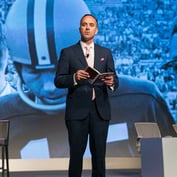A survey released March 11 by the Defined Contribution Institutional Investment Association found auto-enrollment programs increased enrollment by almost 30%, and sponsors generally have a favorable view of automatic enrollment.
 There's another side to that coin, though. While enrollment has increased, participants aren't saving enough. Sponsors indicate they believe the optimal savings rate is around 10%, but the current automatic default rate is typically 3%; if escalation is offered – and only about one-third of sponsors do – that rate rises to just 6%.
There's another side to that coin, though. While enrollment has increased, participants aren't saving enough. Sponsors indicate they believe the optimal savings rate is around 10%, but the current automatic default rate is typically 3%; if escalation is offered – and only about one-third of sponsors do – that rate rises to just 6%.
While almost half of defined-contribution plans automatically enroll employees in the plan, most plans only offer it to new hires (although more than one-third have done a one-time sweep to include their existing employees). The report notes that by focusing on new hires, it could take "years before the full impact of automatic enrollment" is realized.
The report calls inertia the "friend and foe" of automatic enrollment. Automatically enrolled participants will likely maintain low default deferral levels, and consequently will be stuck with inadequate savings levels for years. On the other hand, because employees favor target-date funds their "savings will be well diversified and strategically rebalanced."
The survey argues that inertia isn't the only factor responsible for high participation rates. Employees like automatic enrollment; at worst, they're indifferent. Over two-thirds of respondents said their employee have a favorable view of automatic enrollment. Zero percent said their employees had an unfavorable view.








 March 30, 2011 at 12:03 PM
March 30, 2011 at 12:03 PM










